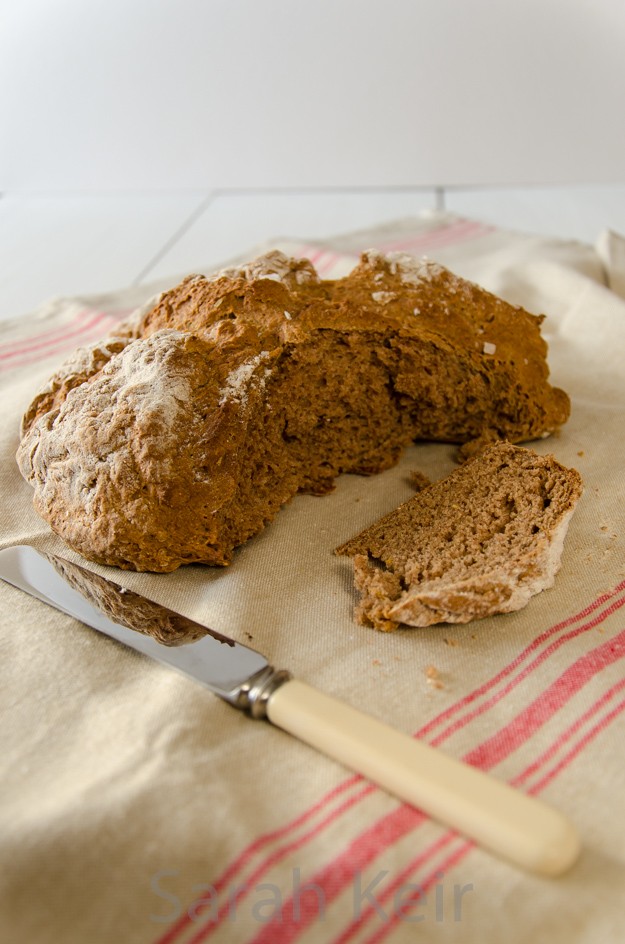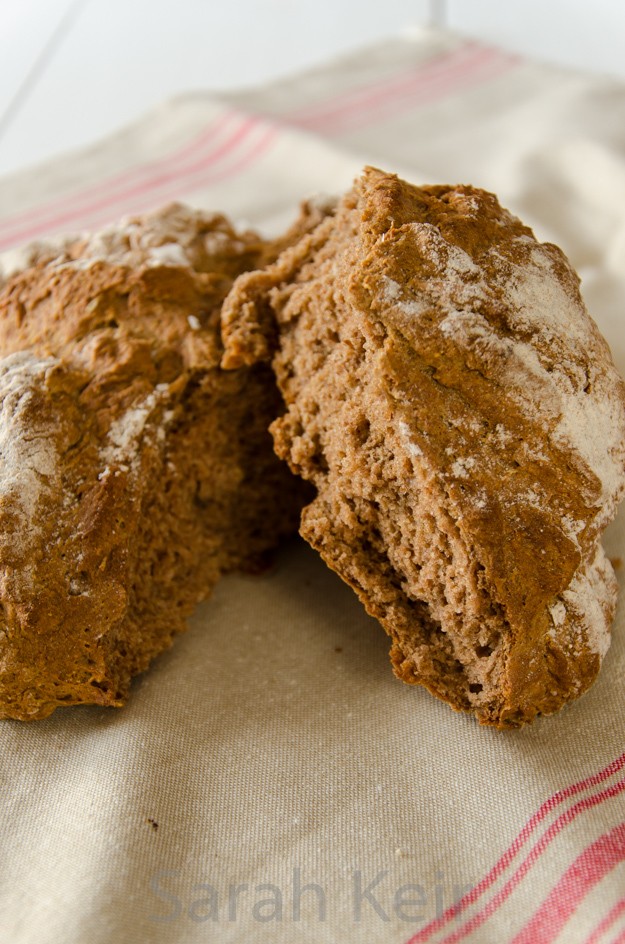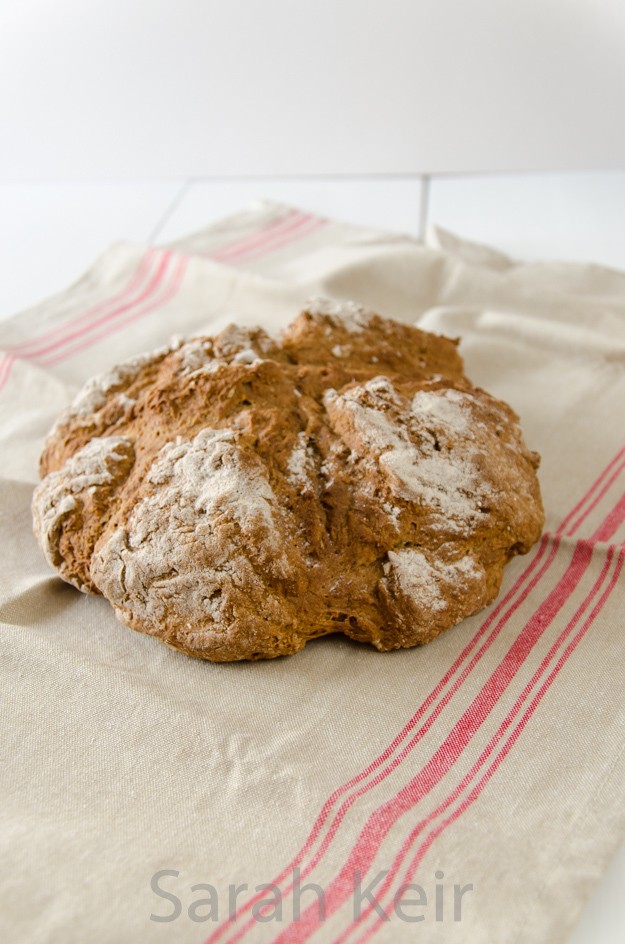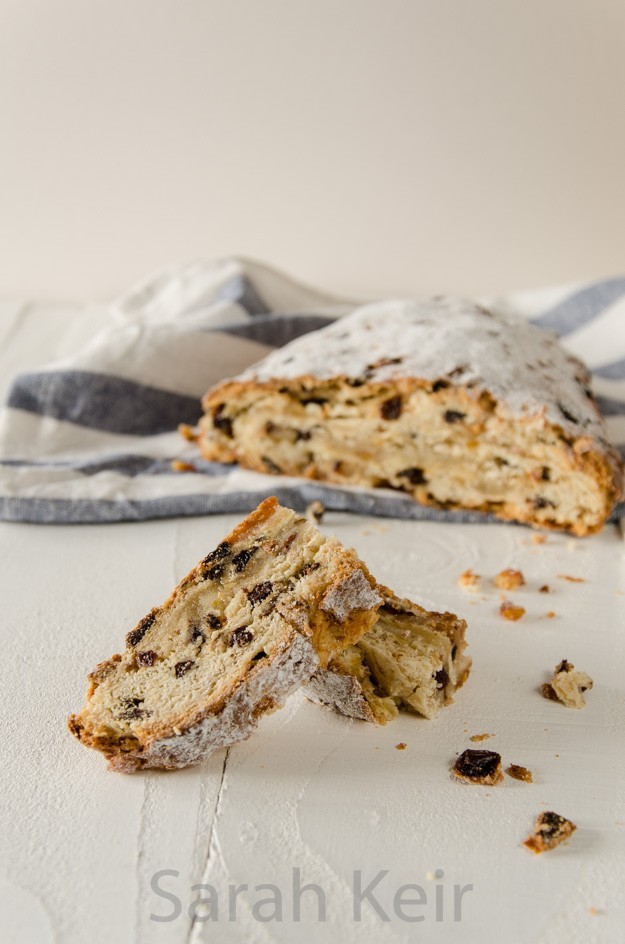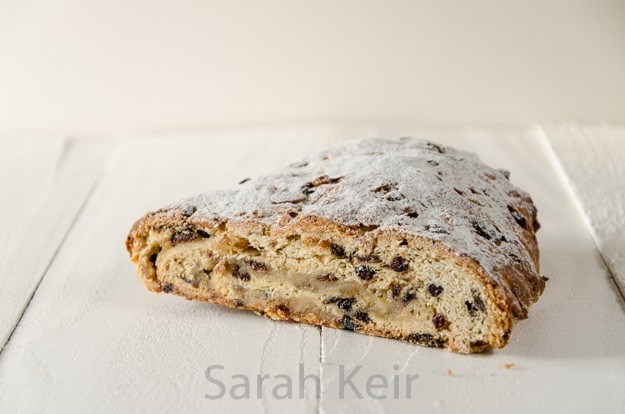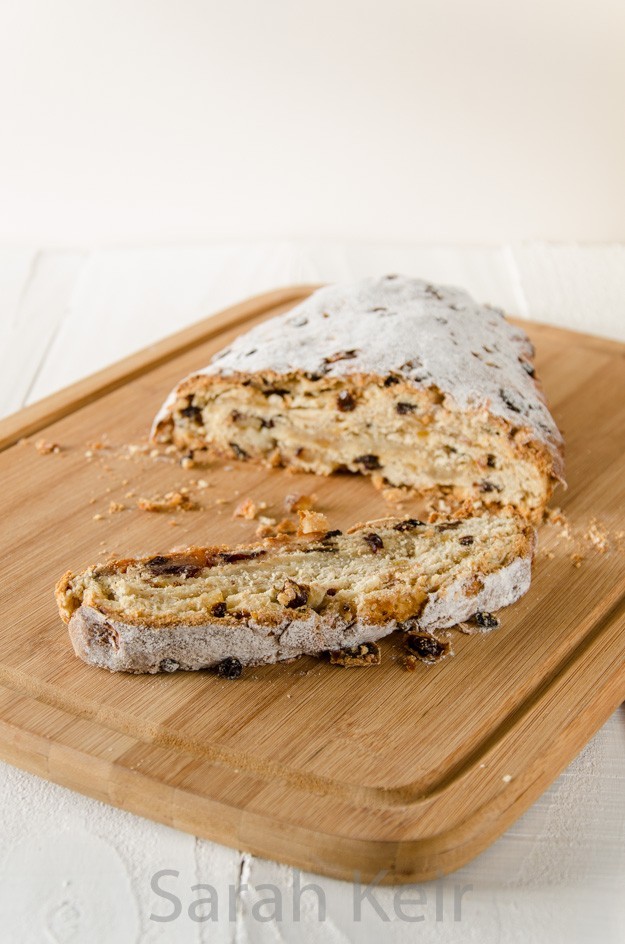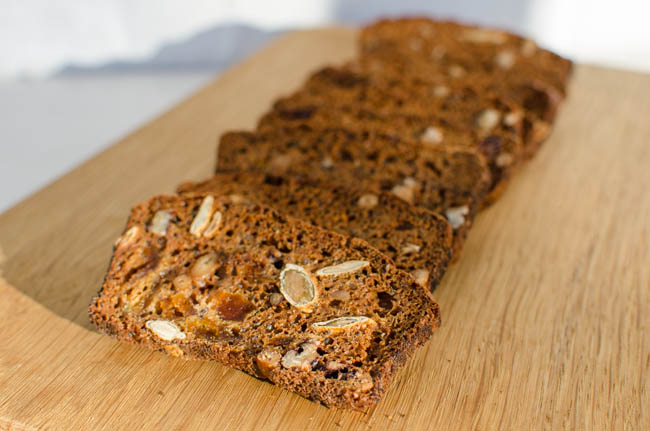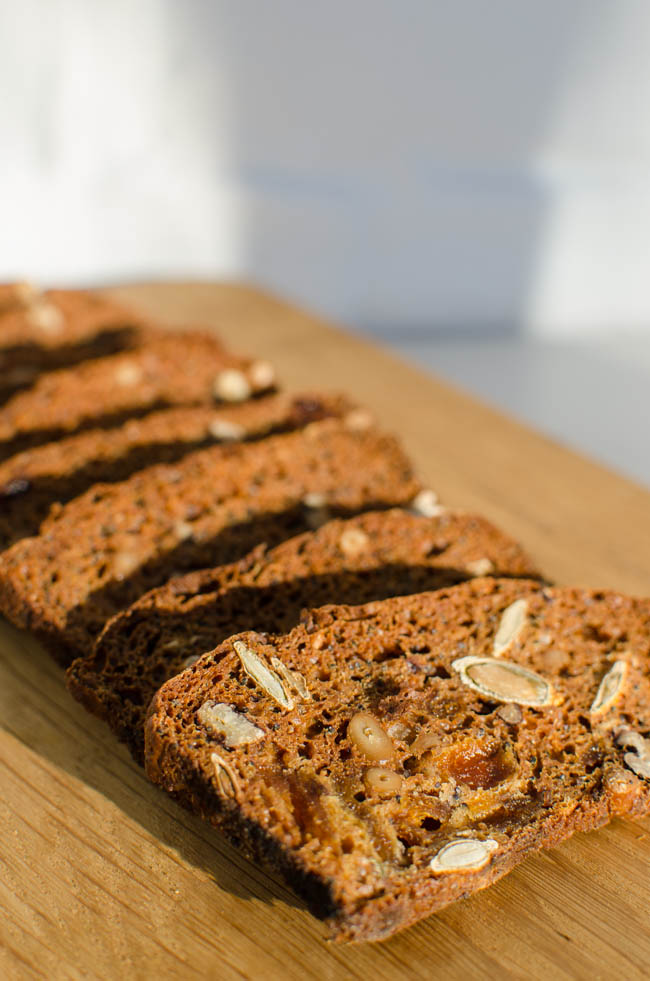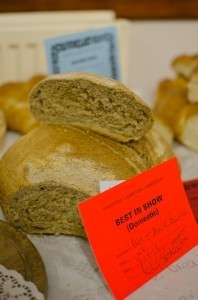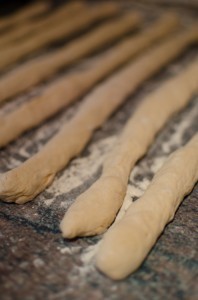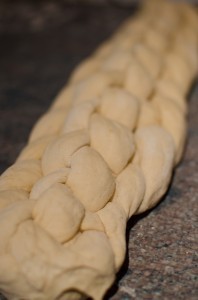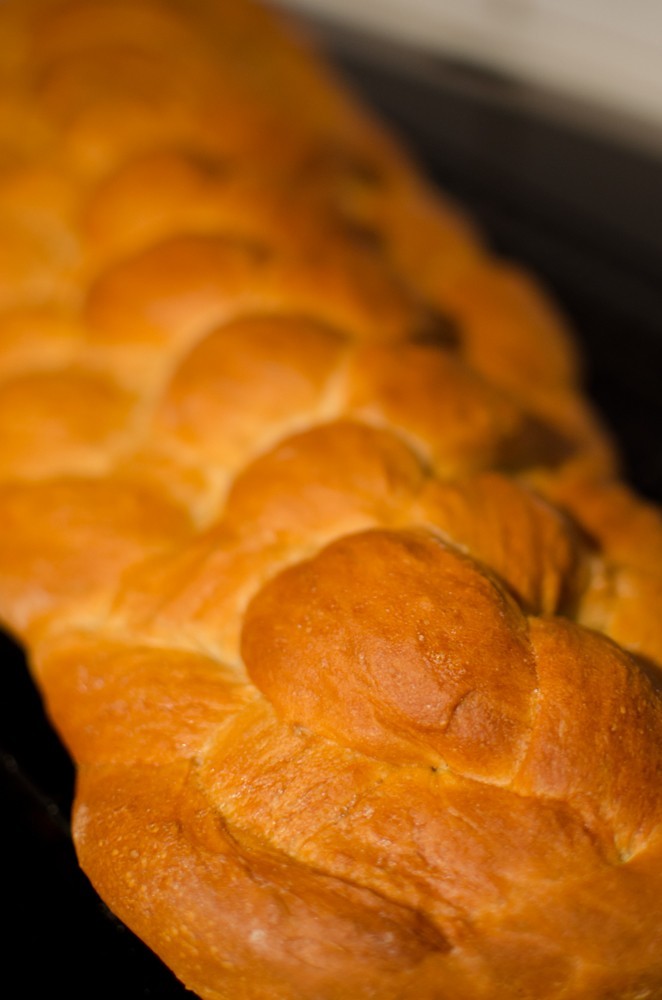I love bread, but it needs to be fresh and crusty and tasty. If I had time I would make sourdough every day, but most of it would go to waste as we don’t eat that much bread. And it takes time, a serious commitment. I sadly had to consign my sourdough starter to the bin this week as it had been forgotten at the back of the fridge for too long and gone bad. When I crave bread, I either go to Waitrose and get some of the expensive French stuff or I make this bread. This goes perfectly with homemade soup so is great for these cold, snowy (at last) winter days and if knocked together in the time that the soup is cooking as there is no kneading or anything. Perfect! It is best eaten on the day it is made but you can freeze it successfully.
Soda Bread (Paul Hollywood recipe)
500g strong flour – I used stone ground wholemeal from Isle of Wight watermill
1 teaspoon bicarbonate of soda
1 teaspoon salt
400ml buttermilk
Heat the oven to 200°C and line a baking tray with baking parchment.
Put all the dry ingredients into a large bowl and use a balloon whisk to mix. Stir in the buttermilk to form a sticky dough. Tip the dough out on to a lightly floured surface and shape into a rough ball.
Place the ball of dough on to the baking tray. Using a sharp knife, mark the dough into quarters, cutting all the way to the tray. Dust with a little flour.
Bake for 30 minutes (check sounds hollow underneath). Leave to cool on a baking rack.

